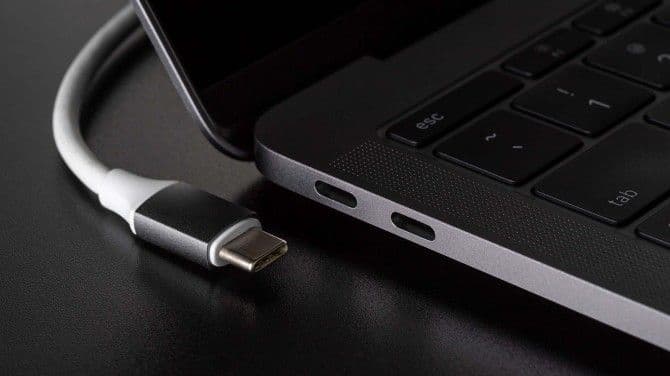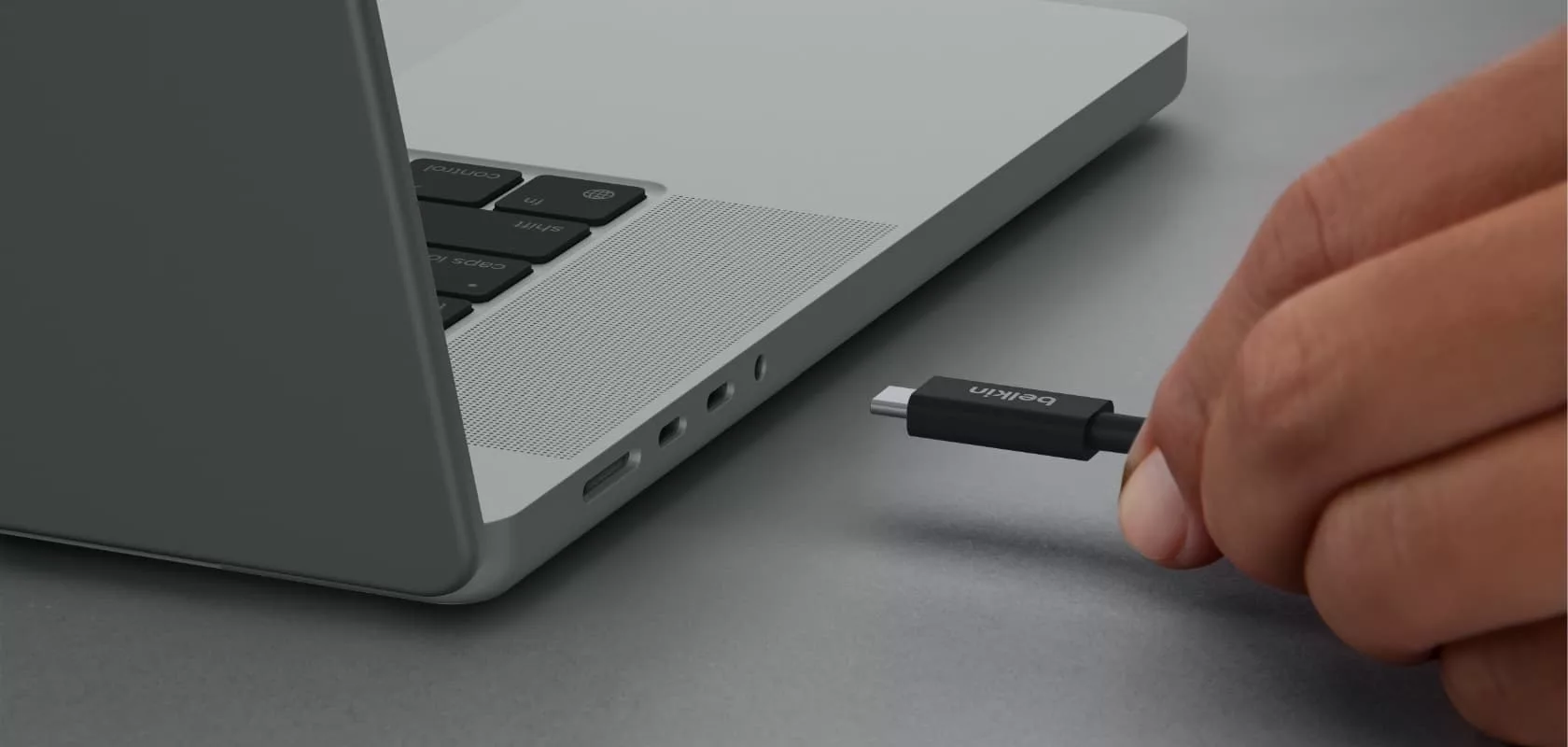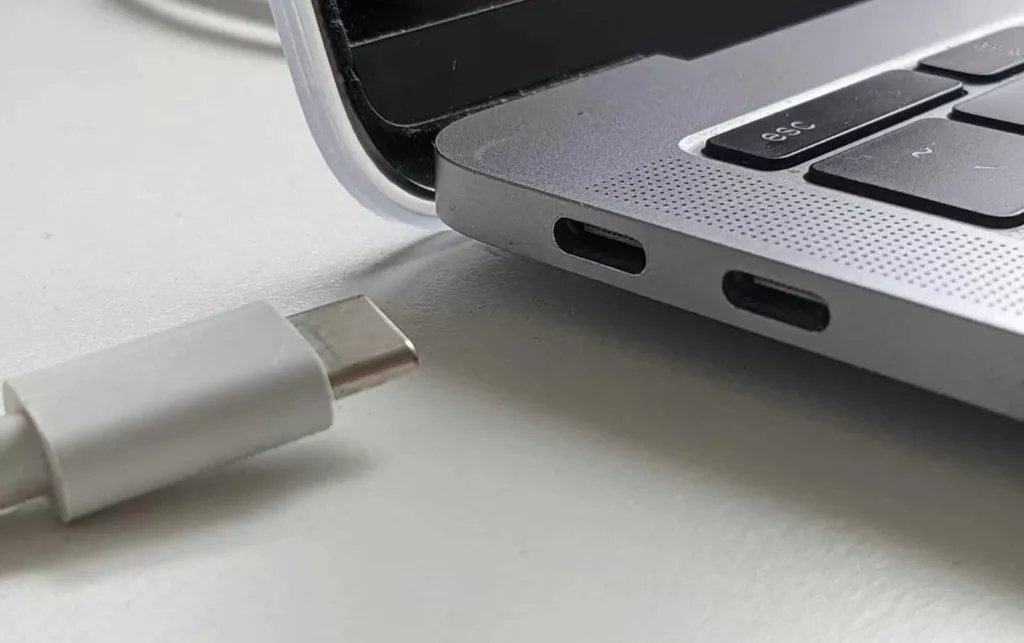Thunderbolt 3 and Thunderbolt 4 Cables, In today’s technology-driven world, high-speed data transfer and connectivity are paramount. Thunderbolt technology has been a game-changer in this regard, offering lightning-fast data transfer speeds and versatile connectivity options for a wide range of devices.
Two of the most prominent iterations of this technology, but what sets them apart? In this article, we’ll delve into the key differences between Thunderbolt 3 and Thunderbolt 4 cables, helping you make informed choices for your devices and connectivity needs.
Thunderbolt 3 and Thunderbolt 4 Cables

-
Data Transfer Speeds
One of the primary considerations when choosing between Thunderbolt 3 and Thunderbolt 4 cables is data transfer speed. Thunderbolt 3, which made its debut in 2015, supports a maximum data transfer rate of 40 Gbps. This impressive speed allows you to transfer large files, back up your data quickly, and even connect external graphics cards for gaming or graphics-intensive tasks.
Thunderbolt 4, introduced in 2020, takes data transfer speeds a step further. It offers the same 40 Gbps maximum speed as Thunderbolt 3, ensuring you can still enjoy rapid data transfers. However, Thunderbolt 4 brings more to the table in terms of compatibility and features, as we’ll see in the following sections.
-
Compatibility
Thunderbolt 3 and Thunderbolt 4 cables have slightly different compatibility requirements. Thunderbolt 3 is known for its flexibility, as it uses a USB-C connector that is widely adopted across various devices and platforms. This means that Thunderbolt 3 cables can work with Thunderbolt 4 ports and devices, but they won’t take full advantage of Thunderbolt 4’s capabilities.
Thunderbolt 4, on the other hand, sets higher standards for compatibility. To be certified as Thunderbolt 4, a cable must meet stricter criteria, such as supporting USB 4 and PCIe 4.0. This ensures that Thunderbolt 4 cables are not only backward compatible with Thunderbolt 3 but also provide enhanced performance when used with Thunderbolt 4-enabled devices. Therefore, if you have Thunderbolt 4 devices, it’s advisable to use Thunderbolt 4 cables to fully capitalize on their capabilities.
-
Power Delivery
Both Thunderbolt 3 and Thunderbolt 4 cables support power delivery (PD) to charge and power devices. However, Thunderbolt 4 cables offer a significant advantage in this department. Thunderbolt 4 mandates support for at least 15 watts of power delivery, ensuring that your devices can charge quickly and efficiently.
Thunderbolt 3 cables, while capable of power delivery, don’t have the same strict requirements. As a result, the amount of power they can deliver varies depending on the cable and device. If fast charging and efficient power delivery are essential to you, Thunderbolt 4 cables are the better choice.
-
Cable Length
When it comes to cable length, have similar limitations. Both have a maximum cable length of approximately 2 meters (around 6.6 feet). Beyond this length, signal quality can degrade, leading to reduced data transfer speeds and reliability. If you need longer cable runs, you might need to invest in active Thunderbolt cable solutions or consider alternatives like optical Thunderbolt cables.
In the Thunderbolt 3 vs. Thunderbolt 4 cable showdown, the choice ultimately depends on your specific needs and devices. offer better compatibility, enhanced power delivery,
and all the features of Thunderbolt 3, making them the superior choice if you have Thunderbolt 4-enabled devices. However, Thunderbolt 3 cables can still get the job done and are more versatile due to their widespread adoption.
Before making your decision, be sure to check your device specifications and requirements. Whether you choose Thunderbolt 3 or Thunderbolt 4, you’ll be benefiting from a powerful, high-speed connectivity solution that ensures your data moves at lightning speed.
-
Cost Considerations
Another factor to keep in mind when choosing between Thunderbolt 3 and Thunderbolt 4 cables is cost. As with any technology, newer iterations tend to come with a higher price tag.
being the more recent and advanced option, can be more expensive compared to Thunderbolt 3 cables. However, the price difference may not be significant for most users, and it’s worth considering the added features and performance benefits you’ll gain with Thunderbolt 4.
-
Future-Proofing
Future-proofing your setup is an essential consideration, especially if you plan to invest in new devices and accessories. Thunderbolt 4 cables are designed with a focus on longevity and compatibility with upcoming technology standards.
By choosing Thunderbolt 4 cables now, you can ensure that your setup will support future devices and advancements in connectivity technology.
READ MORE: Docking Stations in Egypt in 2023: Revolutionizing Connectivity in Egypt
-
Specialized Use Cases

Thunderbolt 3 and Thunderbolt 4
While Thunderbolt 4 cables are the more advanced option, Thunderbolt 3 cables may still be suitable for many users, especially if you have older Thunderbolt 3 devices. Thunderbolt 3 cables can handle a wide range of tasks, from connecting external hard drives and monitors to powering docking stations. If you have specific use cases that don’t require the additional features of Thunderbolt 4, you can continue to use your existing Thunderbolt 3 cables without any issues.
In the Thunderbolt 3 vs. Thunderbolt 4 cable debate, the choice depends on your current devices, future needs, and budget. Thunderbolt 4 cables offer advanced features, better power delivery, and compatibility with the latest technology standards,
making them an excellent choice for those with Thunderbolt 4-enabled devices.
However, Thunderbolt 3 cables are still highly capable and may suffice for users with older equipment or less demanding requirements.
Ultimately, whether you opt for Thunderbolt 3 or Thunderbolt 4 cables, you’re investing in high-speed, versatile connectivity that allows you to transfer data, charge devices,
and connect peripherals with ease.
It’s essential to evaluate your specific needs and make an informed decision based on your setup and future plans to ensure seamless and efficient connectivity for years to come.

